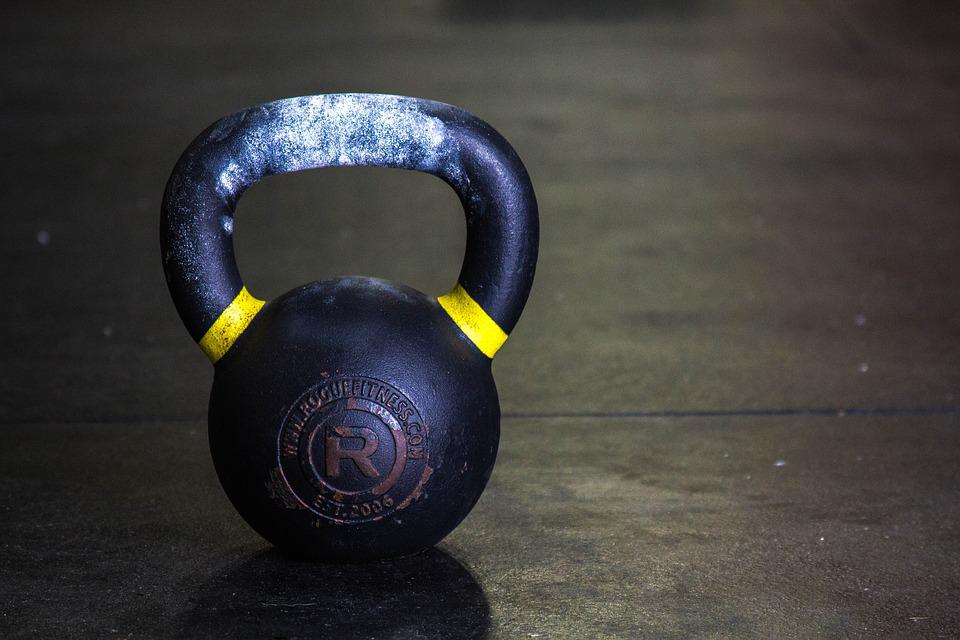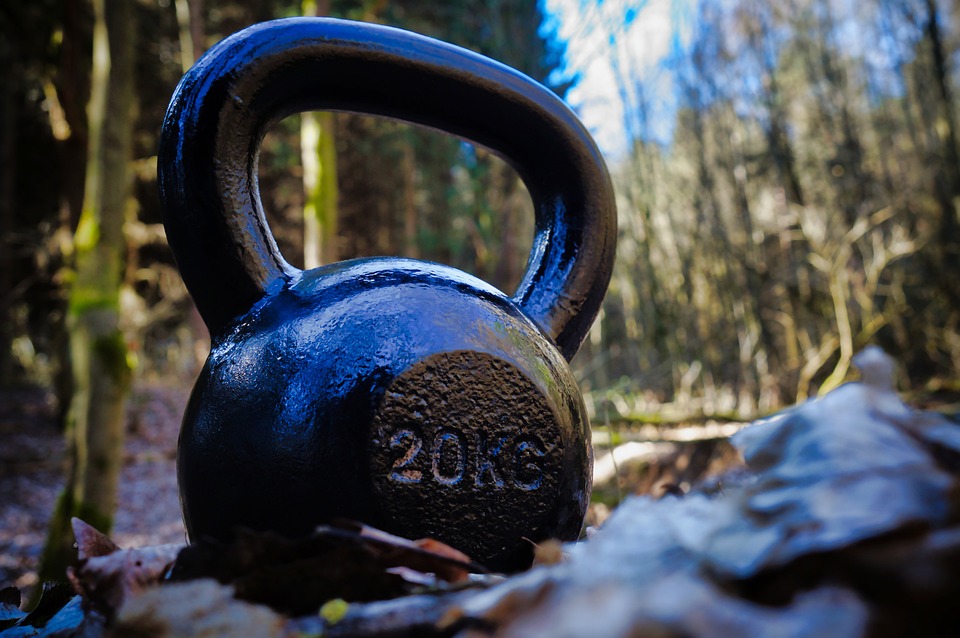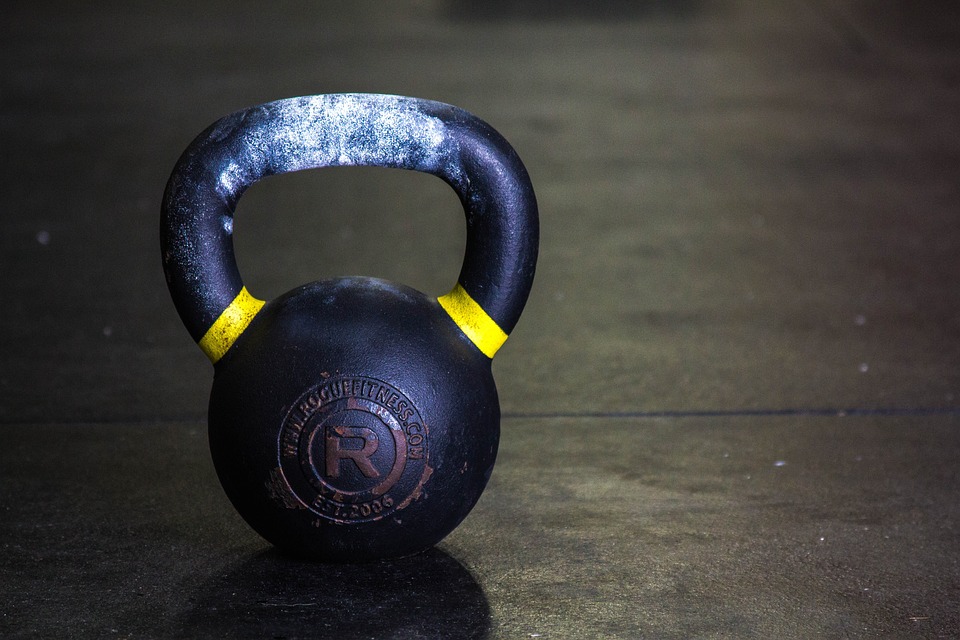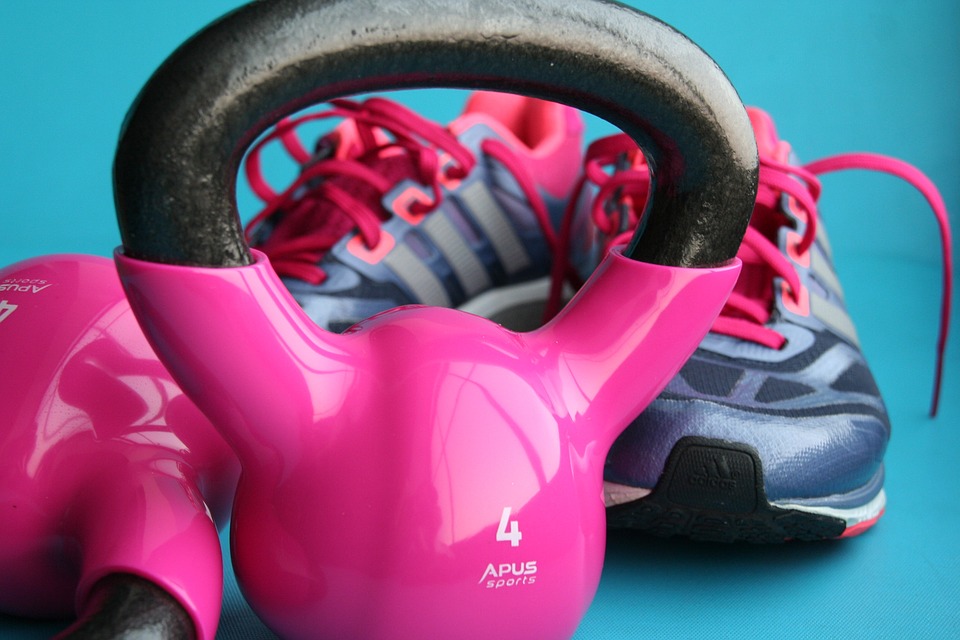
Preserving healthy shoulders is the most crucial part of any person’s exercise program. You don’t need to be overly enthusiastic about doing exercises that involve overhead movements in order to make strengthening your shoulders a priority in your workout routine.
Check out the following suggestions for increasing shoulder stability. Learn how to include them in your fitness program.
Overhead Kettlebell Carry
The kettlebell overhead carry is an activity that tests the power of the shoulders, triceps, and core muscles. It also hones one’s stability. This action is theoretically easy to perform—you merely pick up one kettlebell with one hand (if you are opting for a unilateral movement) or two kettlebells with both hands (if you are going for a bilateral movement) and hold them above your head. You must keep your shoulder joint securely fixed by keeping it tight and the muscles around it tensed. You should start out with a light weight and gradually increase it as your skill with the exercise grows.
Benefits of the Overhead Kettlebell Carry
- Reinforce overhead muscular coordination (and therefore, stability) under loads, which translates into the enhanced ability to maintain lockout in jerks, snatches, and overhead presses.
- Improve core strength by forcing your body to balance offset loads.
- Increase muscle mass by adding major time under tension to your training regimen.
How to Do the Overhead Kettlebell Carry
Lift two kettlebells so they’re extended above your head, with the biceps next to your ears and wrists in a neutral position. When prepared, brace the shoulder blades and tense the abdominal muscles. From this spot, make a little advance, making sure to keep your arms straight up and your elbows out. The stability of the weight should be braced by the upper and middle back, however, the kettlebells may try to move away from the vertical plane.
Turkish Get-Up
The Turkish Get-up is an intricate exercise that can be done by almost anyone. You maintain a weight above your head with a kettlebell, lightly grasping it, then slowly advance from a reclining stance to a standing pose and return to lying down. This action necessitates robustness in the core and legs, as well as the capability to remain stable in the shoulders. well as strength when exercising with weights. Exercising with weights builds a lot of muscle strength and endurance around your shoulder and holds your shoulder in place.
Benefits of the Turkish Get-Up
- Train your body to maintain shoulder integrity by engaging the scapular stabilizers, which will help improve shoulder health and overhead strength.
- Improve full-body coordination, which will help your body figure out how to work together during complex moves like clean & jerks, and snatches.
- Enhance overhead strength — because the get-up is such a slow, deliberate series of movements, the time under tension will be high even when you’re working with relatively light weights.
How to Do the Turkish Get-Up
While laying on your back, grasp a kettlebell in your left hand, with your arm stretched out to a 90-degree angle to the ground. Flex the left leg, and engage in a crunch with your left arm, and both feet remain planted on the floor. You should be sitting on your bum with an object over your head, keeping an upright posture.
Start off by lying on your back. Bring your hips up, and then slide your right leg under your torso, so that your right knee is positioned beneath your hips. Be sure to make sure that your left leg and right hand stay on the ground. Get up while maintaining the weight over your head and ensure it is secure. Get up out of the low-plunge position while actively stabilizing the weight above your head. To go back to the ground, move in reverse order of the steps taken. That’s one rep.
Pin Press
You may already know of pin squats and pin bench presses, so consider these as their version for overhead movements. A partial range of motion exercise that works to strengthen and develop coordination by pressing weight into the upward position is the overhead pin press. This can help remedy any naturally occurring weaknesses in the muscles. Partial range of motion repetitions with overhead lifts can begin at the point of the chin or the height of the eyes, rather than on the shoulder. This technique allows you to lift heavier weights over a reduced range of motion, thus creating a stable movement. By gradually increasing the amount of weight you lift while focusing on keeping your core stable, your capacity to manage heavier loads when doing overhead presses will step up.
Benefits of the Pin Press
- Improve your awareness of the bar path during your lift, which will grease the groove for maintaining a proper bar path during your full range of motion lifts.
- Enhance strength by overloading potential sticking points in your overhead press — this will improve lift completion and lockout abilities.
- Rehab injuries or sore muscles when working in the full range of motion will hurt more than it will help.
How to Do the Pin Press
Position the safety pins for the barbell at eye level and place the barbell on top of them. Approach the barbell as you would when doing a strictly regulated overhead press. Tighten your abdominal muscles, straighten your spine, and press up to firmly complete the overhead press. Once you have stabilized the weight above you, slowly lower it by coordinating the eccentric contraction of your muscles and placing the bar back on the supports. Repeat the press multiple times, ensuring that there is no bouncing or reliance on momentum when executing the lift.
Handstand Holds and Strict Handstand Push-Ups
Accomplishing handstand holds and rigid handstand pushups can provide not only a cool appearance, but it can also help to promote shoulder health. Consider these exercises analogous to overhead lifts or presses. However, instead of using a kettlebell or weight-loaded barbell, the load is your own body weight, and the movements are performed upside down. You are doing this exercise without weights, just using the weight of your body. Using your own body weight rather than heavier weights is always a better choice for protecting your joints. You will gain improved body control and poise in addition to increased abilities while practicing the handstand and handstand push-ups.
Benefits of Handstand Holds and Strict Handstand Push-Ups
- Improve full-body coordination and core engagement, teaching you how to recruit maximal muscular tension to enhance lift efficiency.
- Engage your shoulders, core, upper back, and triceps all at once, improving strength and force production.
- Increase positional awareness in a compromised (upside down) position, which can translate into greater comfort with complex lifts like presses, jerks, and snatches.
How to Do Strict Handstand Push-Ups
Stand at a distance of around 8 to 12 inches away from the wall, with your fingertips pointing towards it. Push off the floor with your feet so that you are in a wall-supported handstand position. Remain in this place in order to cultivate ease and power while you are still mastering the basics.
When doing handstand push-ups, ensure that the elbows bend slightly inwards as you lower yourself towards the bottom of the rep. Maintain upper back and core stability. Push yourself up the wall in an upright posture using the muscles in the shoulders, arms, and upper back, keeping your legs close together and your abdominal muscles tight. Don’t forget to breathe!
Landmine Shoulder Press
To perform the landmine shoulder press, you use an angled barbell that is rested in a corner or secured in a landmine attachment. This shoulder press involves pressing the weight straight up with your shoulder. Don’t have one? Find a secure and durable spot in your workout area and slot the tip of the barbell at the bottom where the two walls join. This exercise can not only give increased strength and stability in the shoulders but also be used to focus on unilateral power and balance, fortifying the core, and reinforcing the oblique muscles in preventing rotational movements.
Benefits of the Landmine Shoulder Press
- Increase your overall pressing strength by focusing on the shoulder and triceps, with an emphasis on scapular stability.
- Address strength asymmetries by working on unilateral strength and stability issues.
- Reinforce the anti-rotational strength of your core, enhancing your overall core stability.
How to Do the Landmine Shoulder Press
Place the barbell in the support for the landmine and increase the weight at the end of the barbell if possible. Stand facing the barbell with the feet hip-width apart. At shoulder height, the upper back should be contracted, the hand gripping the end of the weight, and the elbow kept beneath the wrist. Establish the foundation, stretch the limbs, and tense the buttocks before commencing the exercise. As you push the landmine upwards and forward, it is important to keep the shoulder level and your core firm while performing the move. Gently reduce the amount of weight being lifted, paying attention to the muscles around your shoulder blades and abdomen.
7 Tips to Improve Your Overhead Stability Exercise in 12 Weeks or Less
1. Build Stronger Scapular Stabilizers
The shoulder blades and the muscles located at the back of the shoulder (rotator cuff) are responsible for providing the shoulder with stability. People who dedicate their time to overhead pressing may want to focus on bolstering the muscles responsible for rotator cuff and scapular rotation. This could help augment the strength and stability of the affected areas.
A lack of shoulder solidity in the upper back and back of the shoulder could lead to excessive strain on the little muscles in the shoulder or a feeling of insecurity with heavier loads lifted overhead (both of which could cause injury).
Including activities such as crawling, arm locks, Turkish get-ups, and band pull-apart in your workout routine can help to secure the scapula and shoulder while doing an overhead press.
2. Stretch the Lats and Triceps
Poor shoulder mobility is a frequent problem among weightlifters who have a powerful press but face difficulty with the shoulder press.
The triceps and lats are frequently tight, making it difficult for a person to place a weight over their head and keep it in a secure position. If you cannot lift the weight up to the back of your head without having to arch your back too severely, some easy stretches for your triceps and lats could help you out.
Stretching the lats and triceps helps create a secure, solid posture when bearing weight overhead that lessens the strain on the front part of the shoulder. This can help to more accurately lift weights overhead without any unnecessary wear and tear.
Additionally, to ensure optimal shoulder stability and prevent any harm, it is beneficial to maintain your lats and triceps in a relaxed state. This prepares the body for exercises like the overhead press, shoulder, and triceps, which may require you to repeat them often.
3. Train Your Sticking Point
Weakness or mobility problems may be responsible for a sticking point while performing a strength activity, as they prevent us from demonstrating enough muscle strength in order to continue moving the weight upward.
If you’re deficient in the lower size of the movement, focus on increasing it through practice more. Alternately, if you have a limited range of motion at the highest point of your motion, you should do more exercises to strengthen that point.
Addressing your sticking point can be done through various methods such as pausing, doing partial range of motion reps, and experimenting with overhead press variations like pin presses. This will help to teach your body how to better accelerate and become more powerful during this crucial point.
You can also lift weights while using resistance bands or chains to enhance the load when doing overhead presses. This type of training method is named accommodating opposition and has proven to be highly proficient at improving the speed of force production and power.
4. Build Stronger Triceps
The triceps play a major role when coming to the concluding steps of the overhead press, and should be practiced individually after having completed the overhead press itself. The triceps are essential for elbow extension and play a major role in the second portion of repetition, much like the bench press.
If you are struggling to bring weight to full lockout while lifting overhead, this can be a sign that your triceps need more attention. To rectify the issue, work on partial presses in addition to adding isolation training for your triceps.
5. Improve Your Posture
Having bad posture can be damaging not just aesthetically, but it can also be the primary cause of issues with overhead press form and result in injuries due to overhead lifting.
If your posture is not great, it will be more difficult for you to keep an upright position during the pressing motion, and you may not have the same range of motion over your head as if your posture had been better. Two changes that should be implemented in training are to increase the strength of the upper torso and enhance flexibility in the body.
Incorporating exercises that assist in stability, as well as performing Z presses and overhead carries, can be efficient approaches to getting better. In addition, you can take care to maintain good form and posture when doing the overhead press. Doing so will help to strengthen the upper back and shoulder muscles that support posture.
6. Control the Eccentric
If you want to create more strength in your lifting, begin by mastering the complete form so that you are able to teach the muscles to brace firmly and generate force all the way through each movement.
Regulating the lowering part of the overhead press is a great way to increase the amount of time your muscles have to strain and train the complementary muscles of your back and posterior shoulder that are needed to have a good, strong overhead press.
To exercise this, carefully decrease the weights, ensuring that you perceive the back muscles and back shoulder muscles being activated and working to bear the burden while you bring it back to your body.
7. Do Overhead Presses More Frequently
Upper body pressing is a skill that can be perfectioned with practice. To get better, it is essential to exercise the form more often in order for the body to become more familiar with the method.
When people wish to raise their lifting strength, one effective way of doing so is by doing the exercise more regularly and including extra modifications like partial reps, bands, chains, and tempo.
By practicing movement frequently, you enable the nervous and muscular systems to adapt efficiently and enable them to handle heavier loads when lifting overhead. Additionally, it provides your brain with extra chances to adjust the motions.
James de Lacey, the proprietor of Lift Big Eat Big, claims that the overhead press is an exercise that is focused heavily on the intensity of its practice. . Lift with maximum effort on a regular basis, at least twice or ideally three times a week, if you desire to experience remarkable growth in your overhead pressing power.














